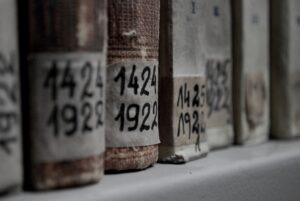Poetry Techniques: An Introduction to Different Poetic Techniques & Poetic Devices in Writing a Poem
Introduction
Importance of Understanding Poetry Techniques and its Purpose
As a writer, I often reflect on the importance of understanding the techniques and purpose behind poetry. Over the years, I have consumed plenty of poetic advice to further my craft and knowledge in this area. As writers, we must comprehend why it is essential to understand these techniques and what they can do for our work.
It is clear that all successful poets have an intimate understanding of their craft – from structure to form to style, they can manipulate words in a way that brings brilliance and beauty into their poems. To become a great poet one must learn basic poetic techniques such as meter, rhyme scheme, alliteration, assonance and more.
By understanding these concepts we can more easily create unique pieces that captivate readers with powerful imagery and emotion.
What is the difference between Poetry Techniques and Poetic Device?
Poetry techniques and poetic devices are terms often used interchangeably, but they refer to different aspects of poetry. It involves the structure and form of the poem – how it is written or composed. This includes rhyme scheme, meter, line length, and stanza formation.
On the other hand, poetic devices are literary tools used in writing poetry to emphasize specific ideas or convey a particular feeling or emotion. Standard poetic devices include metaphor, simile, alliteration, imagery, and personification.
When looking at a specific poem, it’s essential to recognize what technique has been used in its composition and what poet has employed poetic devices. Understanding these two concepts gives one greater insight into how poetry works and can also help to interpret its meaning more quickly.
Finding Inspiration
Techniques for generating ideas for poems
When searching for inspiration to write a poem, it is essential to have some techniques for generating creative ideas. There are many ways that poets can come up with something creative and original, regardless of the type of poem they’re writing. Writer should focus on word choice and style of writing as key elements to their work.
One strategy is to think about a favorite place or memory from life experiences and describe it in poetic form. This involves expanding on the sensory details such as sounds, smells, tastes and textures so that readers can imagine what it was like being there.
Another helpful method is reading other poetry written by authors you admire; this may open up new directions or stimulate ideas related to their explored topics.
Inspiration from the world around you
There is plenty of inspiration everywhere, and you don’t have to look far to find it. Here are some helpful tips on how to draw inspiration from your surroundings and use it as poetic advice.
To begin, note all the little details that make up your day: words that you hear people speaking, meaningful conversations, any new experiences or sights you encounter–anything can be used as source material. Once you’ve taken note of these things, start using them in the poem by writing down any lines or phrases that come to mind; this will help establish an idea for the poem and give it direction.
Going on a walk or a trip outdoors is a fantastic additional approach to getting inspiration from your surroundings. It may be tremendously inspiring to be surrounded by the beauty of nature, whether you are walking through a forest, along a beach, or in a park. Please strive to include the hues, textures, and shapes you observe in your surroundings in your poetry.
The natural environment is a fantastic place to find inspiration for visuals and it can also be a very effective way to evoke feelings.
Finally, do not be afraid to seek inspiration from other poets. Reading and studying poetry from different times and civilizations can teach you various techniques and styles, which will help you establish your voice and aesthetic.
Finding inspiration in your environment requires being open-minded, curious, and willing to try new ways and aesthetics. People frequently make the most exciting and essential discoveries when they move outside of their comfort zone and try new things.
The Power of Language
Choosing the right words
When a poet uses words to create poetry, it is important for them to choose the right words. Words can be used in many different ways, from describing a scene or moment to conveying emotion and meaning. By choosing the correct word or phrase for their poem, poets can express themselves in ways other forms of writing cannot achieve.
The type and number of words used in poetry can significantly impact its effectiveness. Using fewer words than necessary can leave the poem feeling incomplete and uninspired, while using too many may lead to confusion among readers. Poets must also ensure they use language that best captures their intended message; this could mean finding more creative or obscure words if they feel commonly-used ones won’t do justice to their work.
Use of imagery and figurative language effectively
Imagery and figurative language are common techniques used in poetry to make the poem come alive for readers. They create a sense of emotion and allow the reader to visualize what is being expressed. Imagery can be defined as “the use of words or phrases that create vivid mental images” and figurative language encompasses such literary devices as similes, metaphors, personification, and hyperbole.
When used effectively in poetry, these tools can bring renewed energy to the work. For example, imagery adds depth by giving concrete details allowing readers to feel like they are experiencing the poem with all their senses: sight, sound, taste, touch and smell. Similes help readers draw comparisons between two seemingly unrelated objects while metaphors allow them to understand abstract notions more easily by equating them with something more familiar.
Structuring Your Poem
Techniques for crafting a strong structure
The use of structure in poetry has the ability to elevate a poem, allowing it to stand out from other pieces of literature. Crafting a strong structural technique is an essential tool for any poet and can be done by regulating and controlling the number of syllables used in each line as well as employing enjambment.
The purpose of including structure in poetry is to create consistency and easily distinguishable patterns between lines or stanzas. Limiting the amount of syllables per line allows for a more poetic flow that encourages readers to pause at certain points throughout the poem. Enjambment occurs when one line moves into the next without punctuation, creating an uninterrupted rhythm that can increase suspense or draw attention to certain words or ideas within the poem.
By strategically utilizing these structural techniques, a writer can effectively control how their work is read and interpreted by an audience.
How to use rhyme and meter effectively
Utilizing rhyme and meter effectively is essential to crafting a poem that effectively conveys its intended message. Both rhyme and meter refer to the sounds used in poetry, with rhyme focusing on repeating consonant and vowel sounds, and meter refers to the pattern of stressed and unstressed syllables.
Effective rhyme can help create unity within a poem and reinforce its message. For example, the use of alliteration, the repetition of the same consonant sound at the beginning of words within a phrase or sentence, can add emphasis and create a sense of flow within the poem. Additionally, onomatopoeia can give a poem extra depth and insight into realism by reflecting actions or items through sound effects such as “buzz” or “caw.”
In summary, rhyme and meter are power tools for poets to create a cohesive and effective poem that conveys its intended message through sounds.
Polishing Your Poetry Writing
Techniques for editing and revising your work
- Writing poetry can be an art form and a difficult one at that.
- Editing and revising your work is an important part of the creative process for any writer or poet.
- With some practice and knowledge of certain poetry terms and techniques, you can refine your poem written to perfection.
- Many poems are written in iambic pentameter, meaning each line consists of five pairs of syllables with stress on the second syllable.
- Paying attention to this as you write will help you create a rhythmic flow throughout your poem, making it more enjoyable to read.
- Writers should also take time to look for words or phrases that could be changed or removed to make the lines more concise or impactful.
Tips for getting feedback on your poems
When creating a poem, getting feedback from others can be an invaluable tool in polishing the work. Receiving input from other writers or literary experts is a great way to get honest and constructive criticism of the poem.
- Give the poem meaning by providing context as to when or why you wrote it.
- This helps readers properly analyze what they are seeing and allows them to give more meaningful feedback.
- When possible, provide some background information about the mood of the poem as well.
- This can help with understanding any underlying themes or messages within your work.
- Consider using poetry analysis tools that offer automated critiques of your writing based on various metrics like rhyme scheme, grammar accuracy and word count per line.
- Share your work with people unfamiliar with poetry to broaden your network or reach. Doing this will get public input and further improve your poetry for the general audience.
- Giving credit or acknowledgment to the people who helped you with the feedback is necessary if you want continuous support from them for your future work.
Exploring Different Forms, Styles and FAQs
Alliteration
Alliterations are a popular technique used by poets to craft their poems. This figure of speech, which involves repeating similar-sounding words nearby, is often used to create a rhythmic flow and draw attention from readers or listeners. By utilizing alliterations, poets can effectively convey their message to the reader in an aesthetically pleasing manner.
Not only do alliterations make poetry sound more appealing, but they can also emphasize specific points within the poem itself. It is a tool that allows poets to draw attention to particular words and ideas they wish to highlight within the poem’s narrative structure.
It can even help evoke certain emotions or moods that may not always be present when reading text. Poets use this technique to capture their audience’s imagination and transform everyday language into something more enthralling and vivid.
Anaphora
Anaphora is a powerful technique used by poets to communicate and convey their message in the most effective way possible. It involves the repetition of phrases or words throughout the line of poetry, allowing for a metrical and grammatical pattern that carries meaning and sentiment. This repetition also emphasizes specific points, which helps to draw attention to them and provides an auditory rhythm that helps to engage readers.
This technique adds texture to written works and creates an emotional resonance with readers, mainly when used skillfully by a poet who can use it expressively. It can also emphasize particular themes or ideas within the poem; by repeating certain words or phrases repeatedly within different stanzas, a poet can create a structure for their work while continuing to explore those themes further.
Assonance
Assonance is a poetic technique where the repetition of vowel sounds in words creates a rhythm and aural texture. It helps poets to add texture, melody, and mood to their writing. As one of the most popular tools used by poets today, assonance can be found in almost any type of poem including sonnets, couplets, quatrains and epics.
It is usually used at the end of a line or as an internal rhyme within the first line. This emphasizes specific phrases that may be important to understanding the poem’s message or theme. It also adds a musical quality to poetry which evokes emotion and encourages readers to think beyond just what is written on paper.
Enjambment
Enjambment as a poetry technique uses a sentence that continues on to the next line without punctuation. This allows the writer to convey meaning in an effective and creative way, allowing readers to explore their feelings as they progress through the poem. It may be used by poets who wish to create an atmosphere of suspense or excitement, leading readers along a path that will eventually reach its desired conclusion.
The beauty of enjambment lies in its ability to emphasize certain words or lines within a poem, allowing writers to control how their work is interpreted by readers effectively. Using enjambment strategically, writers can lead their audience on an emotional journey that draws out particular sentiments at specific points throughout the poem. This technique helps ensure that readers take in each line with greater understanding and appreciation for what the poet wishes them to feel and experience.
Metaphor
Metaphor is a literary device commonly used by writers to express complex ideas in an engaging, visual way. It allows a writer to juxtapose two seemingly unrelated concepts, creating an extended metaphor that is more engaging and memorable than a literal description alone. By using metaphor, writers can express their ideas more clearly and vividly, drawing readers into the creative world they create with words.
An extended metaphor is when a writer expands upon a comparison between two unrelated things over several lines or even an entire work of art. This technique has been used for centuries by authors looking to capture their audience’s attention with clever and meaningful symbolism. By linking one concept with another outside of its ordinary context, metaphors help writers convey abstract ideas like emotion or atmosphere in ways readers can relate to and understand better.
Onomatopoeia
Onomatopoeia is a technique that writers have used since time immemorial. It involves using words that imitate the sound they refer to, which could be anything from animals’ cries to machines’ whirrs and buzzes. Onomatopoeia is often written in italics or underlined font to distinguish it from other words. This technique allows poets to create vivid descriptions of scenes, objects and emotions without relying on nouns or adjectives; instead, they can communicate through sounds alone.
This poetry tool has also been used for centuries as a way for authors to add rhythm and musicality to their works. Many poets have even incorporated onomatopoeia into their metrical patterns by including certain sounds within their alphabet and pronouncing them differently when reciting their work.
Rhyme
Rhyme, as a poetic technique, is one of the oldest literary tools writers use. Since ancient times, poets have employed rhyming words to create lyrical patterns. By using rhymes, poets give readers a more pleasing and structured experience, allowing them to understand the poem better and appreciate its beauty.
It has also been found to enhance the memorability of lines for readers and listeners alike. It enables them to repeat verses easily because it emphasizes certain syllables when pronounced correctly. As such, it helps solidify the theme or idea behind a poem in people’s minds over time. It also serves as an effective tool for story-telling by assisting writers in crafting more impactful and engaging stories while keeping their audience captivated until the end.
Similes
Similes are a common poetic technique that enables poets to express their emotions or ideas in a melodious and stylistic manner. Simply put, similes are phrases that compare two unlike objects or ideas using the words “like” or “as”. By comparing one thing to another, it allows for diction to be made more vivid and interesting. Additionally, this poetic device can add an element of suspense through its creative description of events.
Poets often use similes as one of their main tools when writing poetry. It allows readers to create an image in their mind of what is being described within the poem, thus making it easier for them to relate to the poem on a deeper level.
Furthermore, this technique gives poets a way of emphasizing certain words or concepts to impact the reader more.





